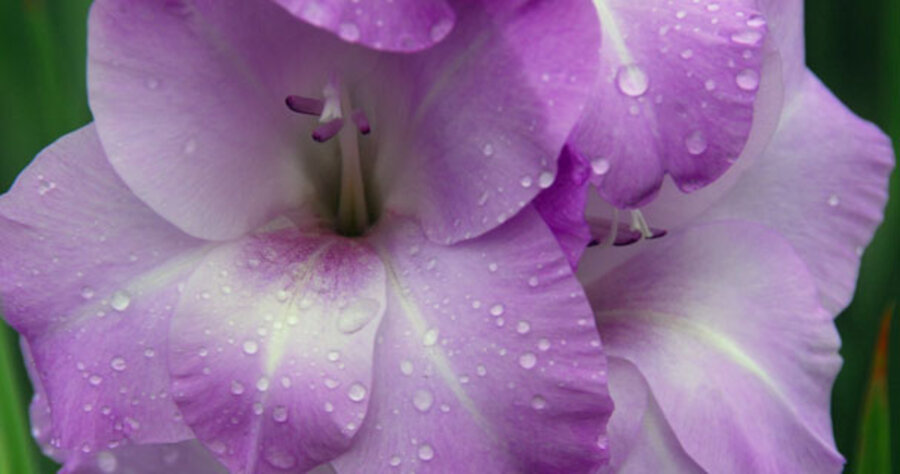Brown blobs become jewels of the summer garden
Loading...
Some of summer’s fanciest flowers start the season as unassuming brown blobs. These homeliest of plant structures are bulbs, roots, rhizomes, tubers and corms. Their transformation from odd-shaped lumps to exquisite flowers is an ugly duckling tale for the garden.
Among the best-known summer bulb plants are lilies, callas, begonias, gladioli, dahlias, tuberose, pineapple lilies, caladiums, elephant ears, cannas and more. Some are known for their flowers, others for their exotic foliage. All are considered jewels of the summer garden for the roles they play all season long.
From the Netherlands Flower Bulb Center in Danby, Vt., comes a look at some of summer’s best-loved bulb flowers and the various odd-looking blobs that produce them:
All are available in spring and summer from garden retailers for planting as bare bulbs or as potted bedding plants. Most are tender bulbs suited for planting out after threat of local frost is past.
Many colorful choices
Begonia – a tuber that produces brilliantly-colored flowers on low-growing plants that thrive in deep shade or filtered sunlight. Begonia flowers are so lush and heavy, they seem to nod languorously in the summer garden.
Calla – a rhizome from which come sophisticated funnel-shaped velvety flowers and exotic long-lasting leaves. Callas are officially known as Zantedeschia. Grow them in full sun or partial shade.
Canna – a rhizome that sends forth towering big-leaved plants known for their statuesque form and flamboyant flowers. Plant in full sun or partial shade. Great in the garden, containers, or landscape plantings. Excellent as vertical accents and screening.
Dahlia – a tuber that produces varieties of so many different types, shapes, looks and colors that the array seems endless. Late summer and fall is dahlia season in the garden. They’re stars of the cutting garden too (the more you cut them, the more they bloom!). Dahlias thrive in full sun.
Eremurus – this tuberous root is one of the oddest-looking for sure – with six, 10, or more fat finger-tubers arrayed like long spokes on a wheel! This is a winter-hardy perennial planted in fall, not a tender bulb planted in spring as are most of summer bulbs.
Eremurus is a four- to five-foot tall spiky plant commonly called Foxtail lily for the way sunlight catches in the small florets thickly clustered along its upper third. These bushy tails extend upright in the summer garden and landscape, with all the dignity and grace of their namesake’s red-hued plume.
Eucomis – a true bulb that sprouts the tall, tufted pineapple lily. Totally tempting in the garden or in pots, this unusual tropical beauty is easy to grow and easy to love.
Its 15-inch spire of tiny green, white or wine-colored florets rises above a base of broad, strappy green leaves. Despite its pineapply-presence, this beautiful flowering plant is not tasty to humans or animal pests. Grow it in full sun or filtered sunlight.
Gladiolus – a corm that’s cute, round and tidy, with just the right amount of heft so it feels substantial. Gladiolus plants are spearlike in bearing with flamboyant flowers that climb the tall stem in alternating steps.
These old-fashioned charmers are back in style, newly admired for their vivid colors and orchidlike flowers. Perfect in a vase, glads are also excellent in the garden, especially when planted amid taller sturdy plants that help to hold them upright.
Lily – a bulb with fleshy overlapping scales is parent to this aristocrat of the summer garden. Lilies are unusual, being summer-blooming, winter-hardy perennials that can be planted either in fall or in spring. Their beauty is legendary.
Throughout history, lilies have played symbolic roles in religion, art and literature. When the lilies bloom, other summer flowers become supporting actors. Lilies perform best in full sun and partial shade.
Great choices for dry areas
Bulb flowers of all kinds are generally excellent choices in areas where water supply is a problem. Bulbs are designed by nature as survivors.
Unlikely other perennials, bulbs (including corms, tubers, rhizomes, and other bulbous plants) have built in storage systems for food and moisture. That’s why they’re so plump. They’re full of special tissues that store starches, sugars and moisture to help the bulb flower get through tough times.
In fact more bulb plants are killed by overwatering than by drought (though there are some that actually thrive underwater). While bulbs benefit from moderate watering to perform at their peak, the only time it is absolutely essential to water bulbs is immediately after planting to help prompt root system development.
Once the roots are established, bulbs can be counted on as some of the toughest, and loveliest plants in the garden.
– From the Netherlands Flower Bulb Information Center





